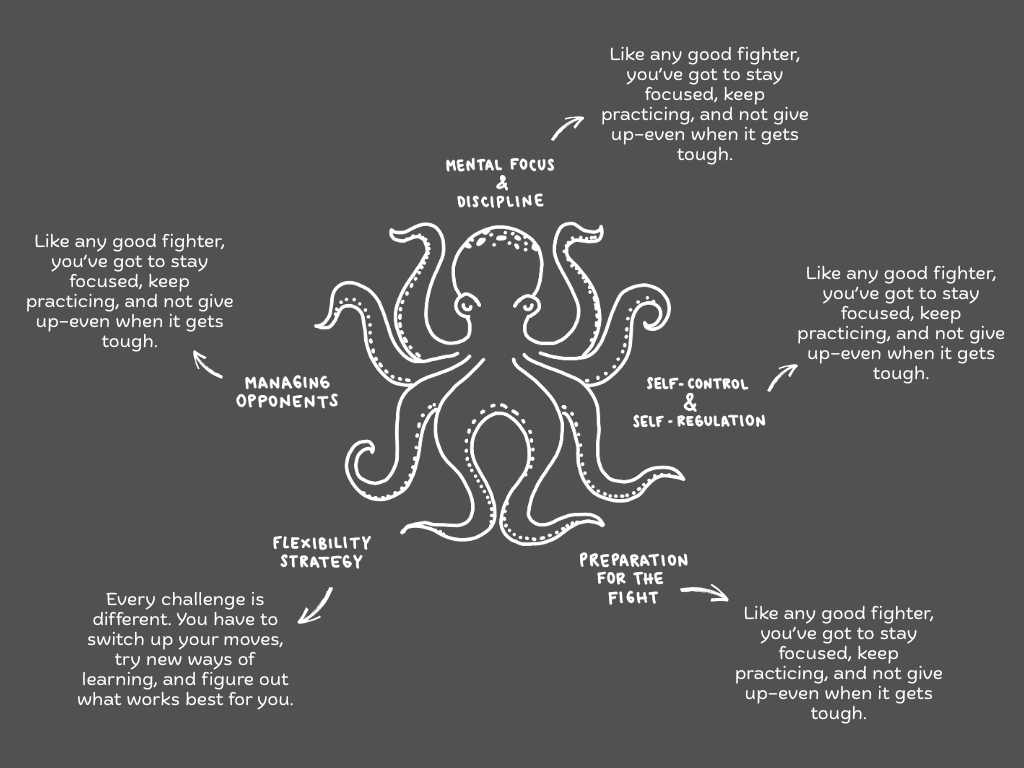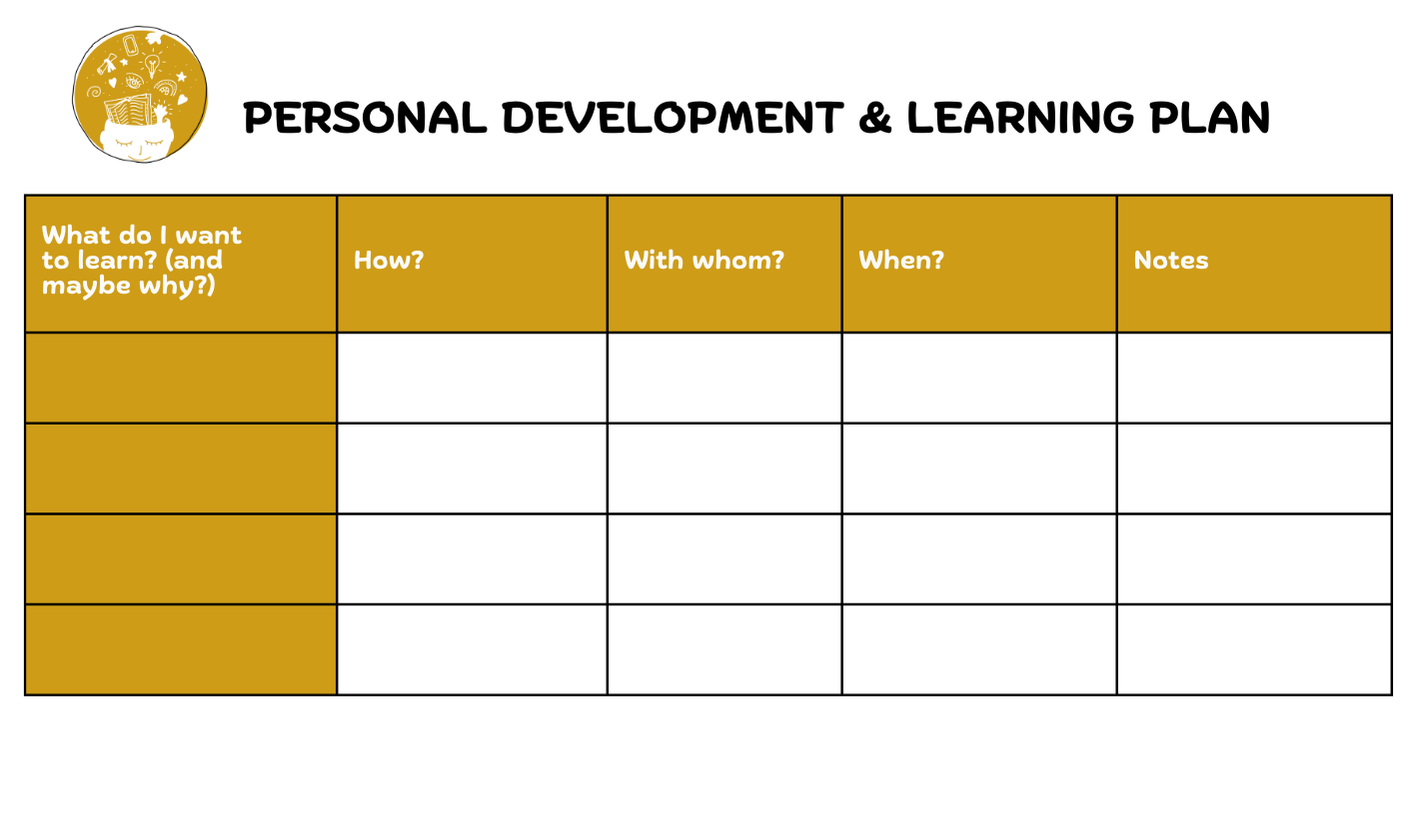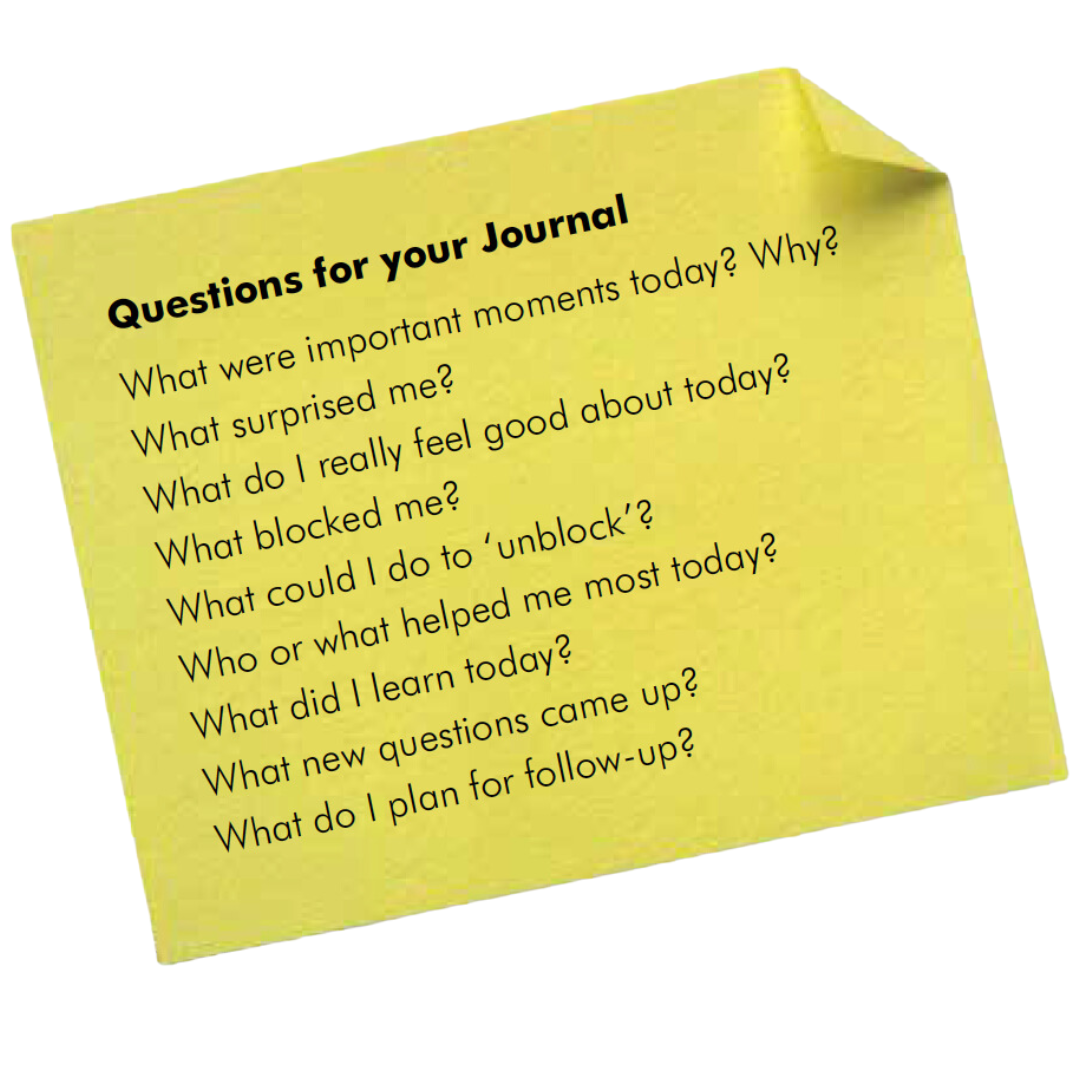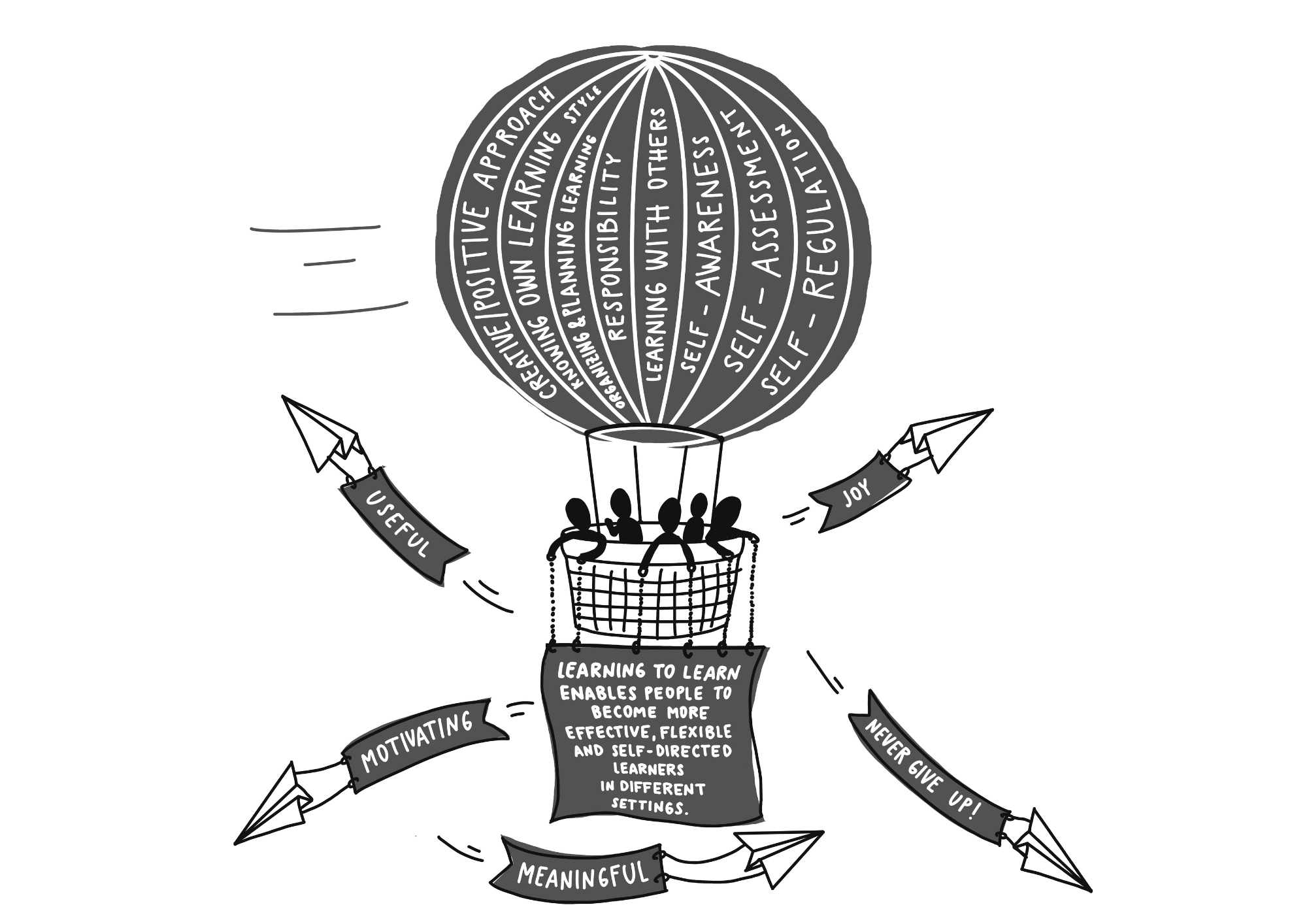1
LEARNING TO LEARN
LEARNING TO LEARN
Sobre
Welcome to our exciting activity! Now, we’re ready to explore into the fascinating and exciting world of learning to learn. Think of it as getting to know the real potential of your brain – it’s like your personal hidden superpower, and we’re here to help you understand how to use it in the best way possible!
- In this activity, we’ll focus on understanding learning and learning to learn how you learn best, how to reflect on your learning experiences, and how to make the learning process not just useful but also fun! Whether it’s for school, hobbies, or life in general, this is your chance to discover what works for you.
By the end of the activity, you’ll feel more confident, motivated, and ready to take charge of your own learning. With this activity we aim to:
- to deepen your understanding of self-directed learning.
- to develop your practical skills for learning how to learn.
- to help ourselves think about what learning methods work best for us and why.
- to build our habit of regularly checking progress and making changes when needed.
Ready to start? Let’s jump into our first activity: “The River of Learning”!
Exercise 1: The River of Learning
The aim of The River of Learning is to look at and reflect on how and what you learnt till now. Look back over your lives and think about times or events where you really felt you learnt something. The result of this reflection should end up on the paper using the metaphor of a river.

Take your time and reflect:
- How was it to use the metaphor for your learning?
- What was challenging in finding your most important learning moments?
- Was there anything surprising in your personal reflection?
If you want to learn faster, try the Feynman Technique. It’s named after a physicist, Richard Feynman, and it’s all about explaining something in simple words, like you're teaching it to someone else. Watch the video below:
Exercise 2: The best and the worst learning experience

Learning Approaches

So… which kind of learner are you right now? And which one do you want to be? 👀
Learning is a big part of life—it starts even before we’re born! It’s not a straight path but full of twists, turns, and surprises, influenced by people, experiences, and emotions. In our activity, we are exploring different ways learning happens, especially in non-formal education, where people choose to participate, focus on their own needs, and grow together in exciting and unexpected ways. Have a look at the poster below and see what you thin

Self-directed learning means you’re in charge of your own journey. You set your goals, pick how you want to learn, and go at your own pace. Teachers? They’re more like coaches or guides—there to support you when you need help, but you take the lead.
Think of learning like martial arts. 💥 Yeah, really!

Exercise 3: Learning to learn...
Think of one situation you know you use competence Learning to learn.
- How did you learn?
- What was different?
- Was the learning efficient?
Share your answers with us below to complete the task 3.

Challenge 1: The Compliment Chain
- Start by giving a genuine compliment to a friend or family member. It could be about their personality, something they’ve done, or something you appreciate about them.
- Once they accept your compliment, ask them to find someone else to compliment in return.
- After complimenting, make sure they pass the challenge on, finding a new person to compliment.
Reflection Questions:
- How did it feel to give and receive genuine compliments?
- Was it easy or difficult to think of something nice to say?
- How did the compliments change the atmosphere around you?


Challenge 3. Word Scramble
Your mission: Find and write as many words as you can using only the letters from

Rules:
🔤 Words must be at least 3 letters long.
🔁 You can only use each letter as many times as it appears in the word.
❌ No made-up words or repeats!
Challenge 4: Why we learn
- Close your eyes and think about one thing you learned or are learning.
- Now think about how you learned it—from the first moment to the point where it became clear to you. Do you think this is something you'll remember for a long time, or will it fade quickly? What does that say about the reasons you listed for learning it?
- Open eyes and write at least 4 why you are learning (reasons).
Challenge 5: My competences
Below you have a list of competencies. Your role to look back at 4 challenges and think what competence did you gained by solving/finding your way:

Your Personal Learning Plan (PDLP)
The Personal Development & Learning Plan helps you plan what you want to learn and how you’ll do it.

👉 Tips to get started:
- Think about what you want to learn and why. Be specific! (Example: “I want to learn basic Russian so I can talk in shops and campsites.”)
- Set a goal and choose a date to reach it.
- Ask someone to help or support you—it keeps you motivated!
You can also use this plan to look back and see what you’ve learned so far. 💡
A highly recommended YouTube video for learning how to learn is "Learning How to Learn" by Dr. Barbara Oakley. In this engaging presentation, Dr. Oakley shares practical techniques and insights into the science of learning, helping us enhance our study habits and cognitive skills.
The Learning Journal
Try a Learning Journal!
A learning journal helps you keep track of what you’ve learned and how you felt doing it. You can write or draw, every day or once a week—whatever works for you!Use a notebook you like, or write online. It’s a great way to reflect, remember, and even share your journey with others. 💬✨

LEARNING IS FUN! NEVER GIVE UP IN YOUR LEARNING!
We learn more when we step out of our comfort zone to tackle something more challenging. The Learning Pit describes the learning process that occurs when we overcome challenges, developing key skills including persistence, resilience and recall, and reaping better long-term rewards. While it’s tempting to stay in our comfort zones, it’s crucial to push ourselves and take on something more challenging. It can lead to better learning, a vital step to achieving our goals.
Lets us summarise our findings of what learning to learn is:


Obter uma medalha da atividade
LEARNING TO LEARN Obter esta medalha
This badge is for learners who took time to explore how they learn best. It’s all about looking at your own learning journey, finding what works for you, and using cool tricks to learn better in the future.
Learning doesn’t stop in school—it happens all the time! This badge helps you understand your own learning style and shows that you're ready to grow, think for yourself, and keep improving.
What you did to earn this badge:
✅ Thought about your own learning using fun activities like “The River of Learning”
✅ Looked at your best and hardest learning moments
✅ Tried out learning tricks like the Feynman Technique (teaching others to learn better!)
✅ Shared your thoughts and ideas with others
✅ Did fun challenges like giving compliments and solving problems in creative ways.
Your tasks were reviewed by an organiser of this playlist. Once you finished all the activities and showed that you reflected on them, you earned this badge!
This badge shows that you understand how learning works for you—and you’re ready to keep growing.
Você precisa concluir todas as tarefas para receber a badge
Tarefas
Tarefa n.º 1
Evidência verificada por: um organizador de atividades
TASK 1: RIVER OF LEARNING
Look back over your lives and think about times or events where you really felt you learnt something. The result of this reflection should end up on the paper using the metaphor of a river. Share your liver of learning with us (attach the picture) and your reflections:
- How was it to use the metaphor for your learning?
- What was challenging in finding your most important learning moments?
- Was there anything surprising in your personal reflection?
Tarefa n.º 2
Evidência verificada por: um organizador de atividades
TASK 2: The best and the worst learning experience.
Write down two pluses and two minuses of the best and worst learning experience you ever had. Share your answer.
Tarefa n.º 3
Evidência verificada por: um organizador de atividades
TASK 3: Understanding Learning to learn.
Think of one situation you know you use competence Learning to learn:
- How did you learn?
- What was different?
- Was the learning efficient?
Share your answers with us.
Tarefa n.º 4
Evidência verificada por: um organizador de atividades
TASK 4: FIND YOUR WAY.
(1) Share your reflection related to Challenge 1: The Compliment Chain.
Reflection Questions:
- How did it feel to give and receive genuine compliments?
- Was it easy or difficult to think of something nice to say?
- How did the compliments change the atmosphere around you?
(2) Share your answers for Challenge 2: Mind games.
(3) Share your answers for Challenge 3. Word Scramble.
(4) Write down 4 why you are learning (reasons) for Challenge 4: Why we learn.
(5) Challenge 5: My competences: Write down what competences you gained by implementing each challenge.
Organizadores
TiPovej!
Badge issuer recognized with
Utilizado em playlists
LifeSkills 360º
TiPovej!Criado em Ljubljana City of Learning
A Badgecraft é a anfitriã desta plataforma e desenvolve-a em conjunto com as principais organizações educativas. O programa Erasmus+ da União Europeia concedeu um cofinanciamento para a construção da primeira versão desta plataforma. Contacto: support@badgecraft.eu.
Plataforma
Alterar idioma:

